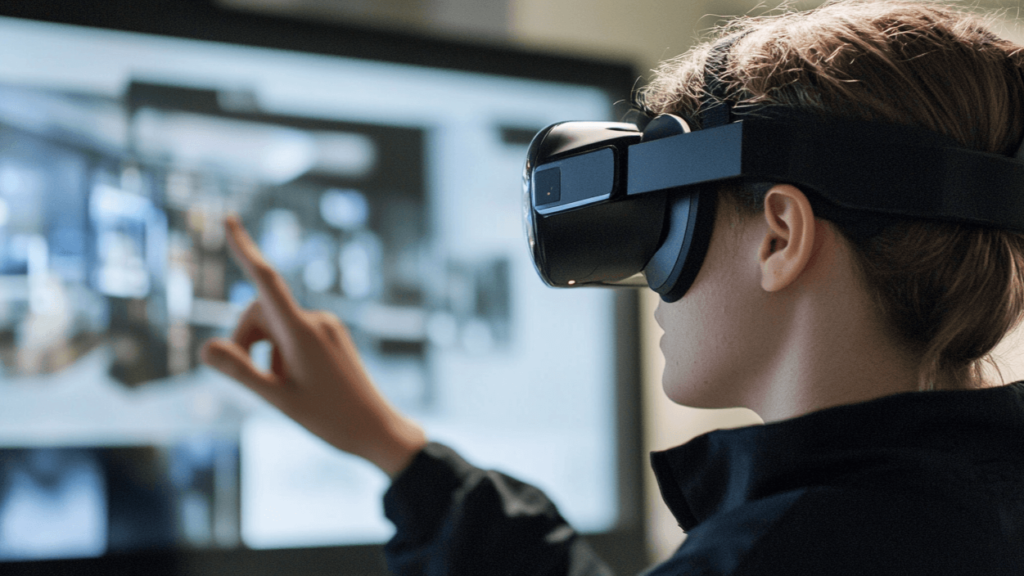
In the rapidly evolving landscape of technology, few innovations have had as significant an impact on education and training as Virtual Reality (VR). With its immersive capabilities and interactive features, VR is reshaping how we learn, practice skills, and engage with content. This transformative technology is not just a buzzword—it’s a game changer that is enhancing the way educational institutions and businesses approach teaching and training.
What is Virtual Reality (VR)?
Before diving into its educational applications, let’s clarify what Virtual Reality is. VR is a computer-generated simulation that immerses users in a 3D environment where they can interact with objects and people in real-time. Using specialized equipment like VR headsets, motion controllers, and haptic feedback devices, users experience a highly interactive environment that can mimic real-world scenarios or entirely fictional landscapes.
The Benefits of VR in Education
1. Immersive Learning Experience
One of the most significant advantages of VR in education is its ability to provide immersive learning experiences. Traditional learning methods, such as textbooks and videos, often lack the ability to fully engage students. With VR, students can step into virtual environments that allow them to explore concepts in a hands-on, interactive manner.
For example, students studying history can take virtual field trips to ancient civilizations or experience historical events in real-time. Medical students can conduct virtual surgeries, while architecture students can walk through and modify their own designs.
This immersive experience not only makes learning more engaging but also enhances retention rates. Research has shown that students retain information better when they actively participate in their learning rather than passively consume information.
2. Safe Environment for Practice and Experimentation
VR is especially beneficial for fields that require practical skills, such as medicine, engineering, and aviation. In these fields, hands-on experience is crucial, but real-world practice can often be costly, dangerous, or difficult to replicate.
For instance, medical students can practice surgeries in a virtual operating room, enabling them to make mistakes without any risk to patients. Aviation trainees can simulate complex flight scenarios, including emergencies, without the need for expensive equipment or the dangers of actual flight training.
VR allows learners to practice and experiment in a safe, risk-free environment, which ultimately leads to better skill development and greater confidence.
3. Accessibility and Flexibility
One of the primary challenges in education and training has always been accessibility. Not all students or employees have the same opportunities to learn from experts or participate in hands-on training. VR breaks down these barriers by allowing students to access virtual classrooms and training modules from anywhere in the world, as long as they have an internet connection.
This increased flexibility is especially beneficial for individuals in remote areas or those with physical disabilities. VR technology offers an inclusive and diverse learning experience, making education more accessible to everyone, regardless of location or ability.
4. Personalized Learning
Every student learns differently, and traditional classroom settings often fail to cater to the diverse learning styles of students. VR allows for a personalized learning experience by adapting content to meet the needs of individual learners. Whether it’s the pace of instruction, the level of complexity, or the way content is presented, VR can tailor experiences to ensure that each learner grasps concepts effectively.
For example, a student struggling with math could engage in VR-based learning modules that break down complex problems visually, making them easier to understand. On the other hand, an advanced learner can skip ahead to more challenging tasks without feeling limited by traditional lesson structures.
5. Real-Time Feedback and Assessment
VR technology is not just about providing an immersive environment—it’s also about tracking performance and providing immediate feedback. In VR-based learning, instructors can monitor students’ progress in real-time and give targeted advice to help them improve.
For example, during a virtual training session, a learner could receive instant feedback on their actions, such as whether a surgical procedure was done correctly or if a problem was solved effectively in a virtual simulation. This helps learners make adjustments on the spot and boosts their confidence in applying knowledge in real-world scenarios.
How VR is Transforming Training Programs in Different Industries
Healthcare and Medicine
In healthcare, VR is revolutionizing medical education. From practicing surgeries to diagnosing rare diseases, VR gives medical students the ability to gain real-world experience without putting patients at risk. Additionally, it allows doctors to refine their skills through continuous simulation, keeping them prepared for unexpected medical situations.
Corporate Training
In the corporate world, companies are leveraging VR for employee training in industries like retail, manufacturing, and customer service. VR simulations provide employees with realistic scenarios where they can develop soft skills such as problem-solving and communication, or technical skills like operating machinery or handling hazardous materials.
Military and Defense
The military uses VR to create realistic combat simulations, allowing soldiers to train for dangerous missions without real-world consequences. These simulations help soldiers prepare for various scenarios, improve tactical decision-making, and build teamwork skills.
Automotive and Engineering
Automotive and engineering companies are using VR to test prototypes and design new vehicles. Automotive engineers can explore a car’s design in a virtual environment before manufacturing it, while assembly line workers can undergo virtual training to learn about new equipment or procedures.
The Future of VR in Education and Training
As technology continues to advance, VR is expected to become even more integrated into educational and training environments. With the rise of 5G networks and improved AI capabilities, VR experiences will be more seamless, realistic, and interactive. The future of VR in education looks promising, with potential innovations like haptic feedback for tactile experiences, multi-user environments for collaborative learning, and enhanced AI-driven tutors that offer personalized instruction.
Conclusion: Why VR is the Future of Education and Training
Virtual Reality is not just a passing trend; it’s transforming the way we approach education and training. From providing immersive learning experiences and creating safe environments for skill practice to offering personalized and accessible training, VR is opening up new possibilities for students and professionals alike. As the technology continues to evolve, we can only expect VR to become an even more integral part of how we learn, train, and prepare for the future.
